RARE Large Antique French Joan of Arc Plaque Signed by Charles Desvergnes c1900
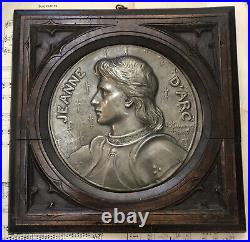

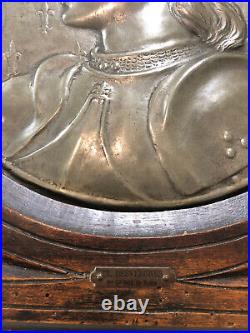
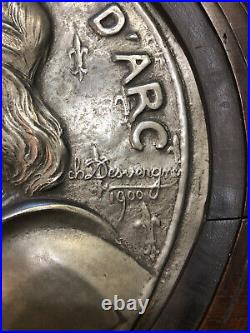

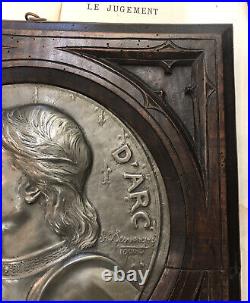
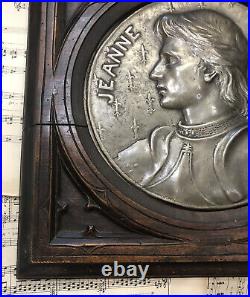
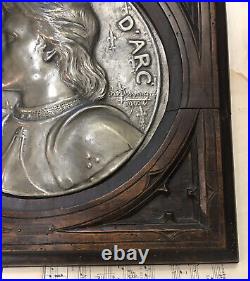

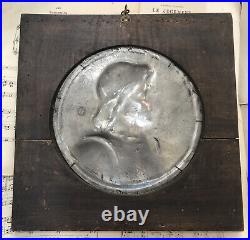


RARE Large Antique French Joan of Arc Plaque Signed by Charles Desvergnes c1900. The plaque is made of pewter (stamp on the back "Etain d'art Chaumette, Paris"). A small plaque on the bottom stipulates that Charles Desvergnes won the Grand Prix de Rome that was a French scholarship for arts students, initially for painters and sculptors, that was established in 1663 during the reign of Louis XIV of France. He won it in 1889.
The wooden frame has a few woodworm holes (see photos). Overall in good condition for its age. Most pieces from Charles Desvergnes are in museums, cathedrals and public squares for the statues and are very rare for sale.
Seen here in the Cathédrale Sainte-Marie d'Auch His life and achievements Desvergnes was born in Bellegarde in Loiret, the son of a working-class family; his father was a baker. At his father's bakery, Desvergnes often used the dough to make models and his prowess came to the attention of the local Lord of the Manor, Charles Galopin, who introduced the young Desvergnes to the Paris sculptor Chapu. By the age of 15, he had passed the entrance exams for the École des Beaux-Arts in Paris. The Conseil Général du Loiret and his home town financed his years as a student and he was to win several prizes whilst at the school. He was runner up for the Rome prize in 1887 and received the prize itself in 1889 for his high relief "Le Retour de l'enfant prodigue".
He was subsequently accepted at the "Villa Médicis" in Rome and studied sculpture there for 5 years. On his return to France he received some prestigious commissions for public monuments including a monument to the neurologist Dr Duchenne and in 1899 his "monument commémoratif du combat des Aydes au faubourg Bannier" was inaugurated in Orléans.
His major break through came with a commission to work on the monument at Melun, another Franco-Prussian war memorial. For this he was to receive the "Legion d'Honneur". It was his long collaboration with Marcel Marron in Orleans that was to ensure that Desvergnes' work had the maximum exposure. Over the years 1902 to 1912, Desvergnes designed and made statues depicting Joan of Arc and Marron made copies of these works and marketed them to churches throughout France. The statues were life size.Desvergnes also sculpted some busts of Joan of Arc and these were again marketed by Marron. In the years after the end of the Great War, there was a huge demand in France for war memorials.
The loss of life had been enormous and every city, town and village in France felt the need to honour those who had lost their lives. There was a strict line drawn in France between public war memorials and those to be erected in parish churches and other religious buildings so in many cases communities sought to have a public and a religious memorial. Again Desvergnes worked with Marron and designed and sculpted several memorials which Marron was to copy and market. Thus Desvergnes' bas-relief of an angel drawing the attention of a dying soldier to Jesus on the cross, his composition showing an angel about to crown a soldier and his composition showing a soldier resting his foot on a German helmet can be seen throughout France. Desvergnes' final work was at Beauvais Cathedral and was a study of the Bishop of Beauvais, Le Senne, seeking a pardon from Joan of Arc. Sadly Desvergnes died before this work was completed and it was finished off by others. Towards the end of his life, Desvergnes left a collection of his work to his home town of Bellegarde, where it can be seen at the Pavillon d'Antin. We import French antiques and have a boutique in Seattle called The Curious Nest. Don't forget to take a look at our other objects.